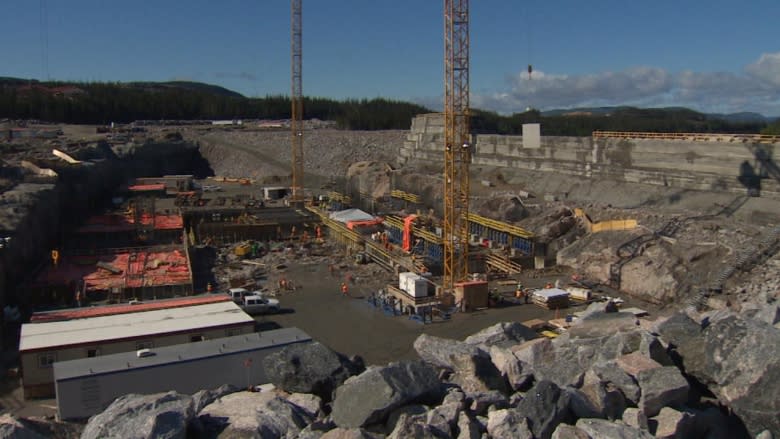Behind the scenes at Muskrat Falls, as a megaproject takes shape
It may not look like much now, but the huge construction site at Muskrat Falls will eventually turn into a power plant that will dramatically boost the height of the falls to generate hydroelectric power.
Right now, workers are building a temporary dam at the site. It's holding back part of the river so workers can stay dry while they build the power-generating facilities. When that's finished, work will continue on two large dams to help raise the water levels.
Water levels now are just three metres high, but when work is completed and power is flowing in a few years, they will be about 40 metres high.
Nalcor's $6.99-billion Muskrat Falls is the biggest construction project in Newfoundland and Labrador, and the most expensive capital works project too. Work on the site swung into heavy gear in 2013, and is now hitting full stride.
"Every day, you see the construction starting to progress," said construction manager Bill Knox. "Every day this changes in the height of the concrete, the number of people arriving on site, the materials arriving on site."
Scott O'Brien, project manager for Muskrat Falls generation, said stabilization of the natural dam will be a key part of construction of the generation capabilities, allowing it to tie into the permanent dam.
"The North Spur stabilization activity will be the largest stabilization program of its kind in North America, and will really establish for us the integrity of this structure and the integrity of the dam at Muskrat Falls for generations," he said.
"What's really great for us here at Muskrat Falls is the natural dam at the North Spur really narrows the river substantially, so it creates for us a channel of flow that we get very high water flow through the river, and it narrows the size of the dam that we would have to construct substantially."
O'Brien said when the dam raises water to a height of 40 metres, the water will fall at a high rate of speed into the powerhouse. Rock has been carved out to make room for four turbines, where water will flow from the dam to generate the power.
Once construction is completed, the Muskrat Falls station will be capable of generating 824 megawatts of hydroelectric power.
Construction in Labrador has its own challenges, not the least of which is a short building season. With days getting shorter and temperatures now dropping fast, crews are building a facility to shelter the construction site.
"Inside we will have our heating system, ventilation systems, 14 overhead cranes," Knox said.
"We also have water systems, concrete distribution systems, electrical, lighting — all inside, all enclosed, so we can do this work 12 months around the clock."
Despite increased project costs since construction started, first power is still expected to flow in 2017, as originally scheduled.




